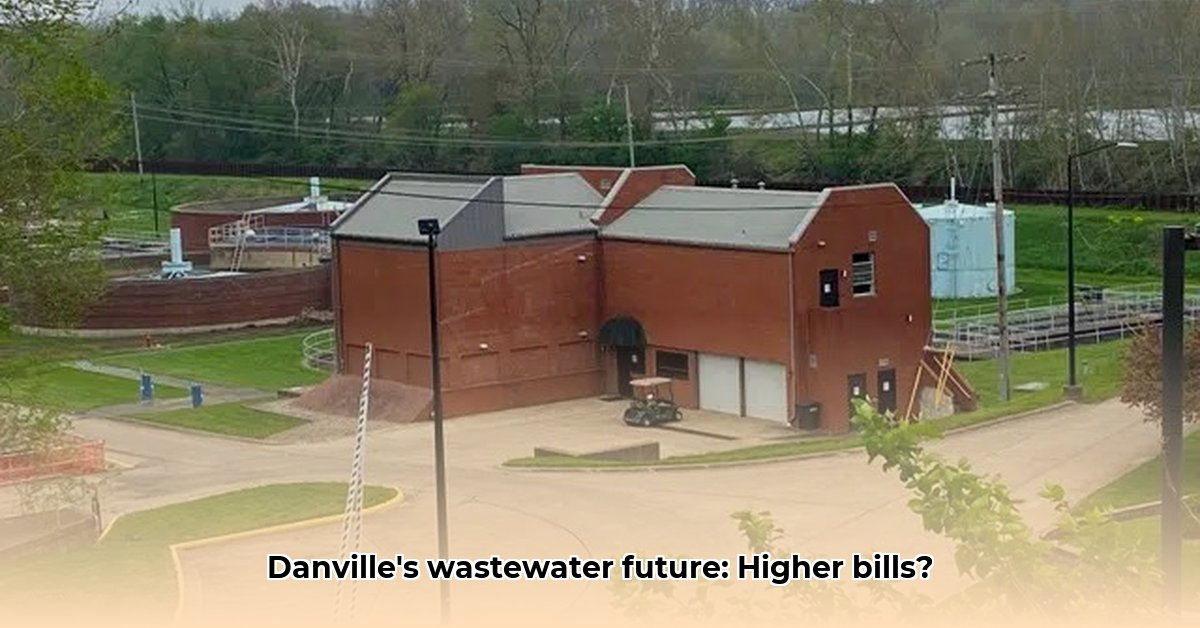
Danville Sanitary District: Addressing Environmental Regulations and Infrastructure Needs
Danville's Sanitary District (DSD) is undertaking a comprehensive plan to upgrade its wastewater treatment infrastructure and meet stringent new Environmental Protection Agency (EPA) regulations by 2035. This plan involves significant investments and potential rate adjustments for residents and businesses. This article details the DSD's current situation, the challenges posed by the upcoming regulations, the proposed solutions, and the potential impact on stakeholders.
Current Situation: Operational Capacity and Financial Overview
The DSD currently processes 16 million gallons of wastewater daily, with a capacity to handle up to 24 million gallons. The 2024 operating budget stands at approximately $5.5 million. The district employs a tiered rate structure based on water usage, aiming to cover operational costs and future improvements. However, the upcoming EPA regulations will necessitate substantial upgrades, presenting a significant financial challenge. [Insert Chart showing current rate structure and budget allocation].
2035 EPA Regulations: Nitrogen and Phosphorus Limits
The EPA is implementing stricter limits on nitrogen and phosphorus discharge into waterways, effective 2035. These nutrients can harm aquatic ecosystems. Meeting these new standards requires significant upgrades to the DSD's wastewater treatment plant. The exact cost remains uncertain, highlighting the need for proactive planning and funding acquisition. [Insert Timeline illustrating key deadlines and regulatory milestones.]
Proposed Solutions: Upgrades and Funding Strategies
The DSD's plan to meet the 2035 deadline is multi-faceted:
Securing Funding: Exploring diverse funding sources, including grants, low-interest loans, and potential rate adjustments. A diversified funding strategy will minimize reliance on any single source.
Plant Upgrades: Implementing necessary improvements to the wastewater treatment plant, potentially involving new technologies or capacity expansions. This will necessitate a phased approach to minimize service disruptions and manage costs effectively.
Enhanced Communication: Maintaining open and transparent communication with all stakeholders—residents, businesses, and the EPA—to ensure understanding and community support. Proactive communication will be vital in mitigating potential concerns regarding rate adjustments.
Stakeholder Impact: Rate Adjustments and Community Engagement
The necessary upgrades will inevitably impact different stakeholders:
Ratepayers: Rate adjustments are likely to cover the costs of plant upgrades and ensure long-term sustainability. The DSD will strive to minimize the burden on low-income families through potential assistance programs. [Insert Chart illustrating the projected impact of rate increases on different income brackets.]
Businesses: Businesses may experience altered rate structures. The DSD will engage with the business community to ensure a fair and transparent process.
Environmental Protection Agency (EPA): The EPA will monitor the DSD's progress in meeting the new regulations. Open communication and collaboration with the EPA are vital for successful compliance.
Risk Assessment: Mitigation Strategies
The DSD has developed a robust risk assessment matrix to identify and mitigate potential challenges:
| Risk Factor | Likelihood | Impact | Mitigation Strategy |
|---|---|---|---|
| Missing EPA deadlines | Medium | Very High | Proactive planning, secure funding, close EPA collaboration, swift upgrade implementation. |
| Community backlash against rate increases | Medium | High | Transparent communication, public forums, exploring cost reduction measures, clear explanations. |
| Unexpected technical problems | Low | Medium | Careful technology selection, comprehensive testing, backup plans. |
| Funding shortages | Medium | Very High | Diversified funding sources, grant applications, emergency funds. |
This matrix guides the DSD's proactive risk mitigation efforts.
Conclusion: Building a Sustainable Future for Danville
The DSD's 2035 plan represents a significant investment in Danville's future. By effectively managing resources, communicating transparently, and proactively addressing potential risks, the DSD can upgrade its wastewater treatment system, meet EPA regulations, and minimize the impact on its community. This collaborative effort will ensure a cleaner, healthier environment for years to come. The success of this plan hinges on open communication, community engagement, and a shared commitment to environmental stewardship.